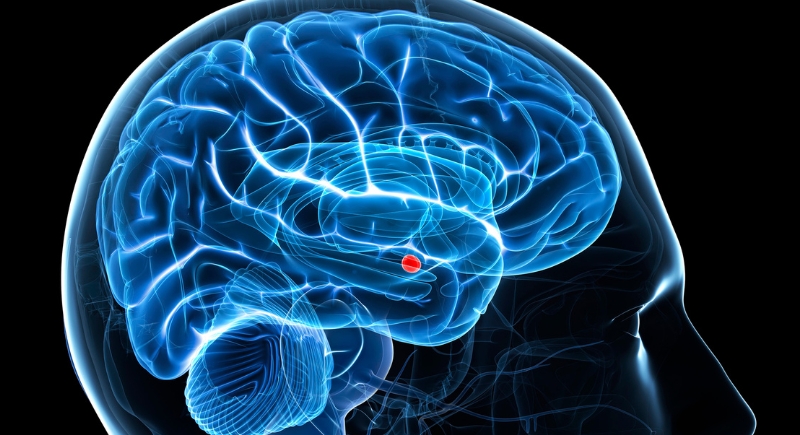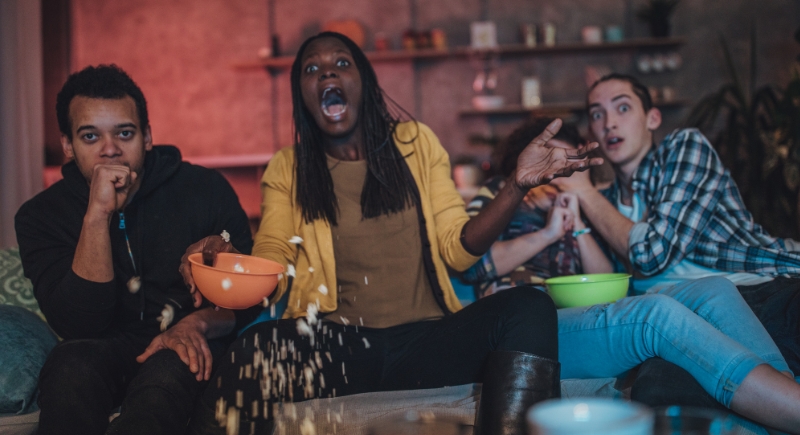The Psychological Reason People Find Enjoyment in Being Scared
There’s a particular kind of thrill that comes with fear—the kind that hits when you’re standing in a dark hallway, waiting for something to jump out. Your heart pounds, your muscles tighten, and when it finally happens, you burst out laughing. It’s irrational, but somehow it feels good.
For centuries, humans have done everything possible to stay safe. Yet today, we willingly pay to be frightened. We find ourselves lining up for horror films, haunted houses, and ghost stories that make our skin crawl. So what’s behind that strange pleasure in being scared?
The Brain’s Trickiest Alarm System

Image via Canva/Science Photo Library
Fear starts with one small but mighty part of the brain called the amygdala. It’s the body’s alarm system, designed to react fast when it senses a threat. Once triggered, it sends a signal through the endocrine system that fires up your heart, tightens your muscles, and speeds your breathing.
Your body prepares to fight, flee, or freeze. This automatic response, called sympathetic arousal, once saved lives during predator attacks. Today, it kicks in during horror movies or haunted houses. But the rush doesn’t end there.
Once your brain realizes the threat isn’t real, it floods you with dopamine, endorphins, and adrenaline. That chemical cocktail creates a euphoric high. You feel alive, relieved, and strangely satisfied. The brain rewards you for surviving, even if the “threat” was just a guy in fake blood.
Researchers say that the emotional flip from fear to safety is the reason so many people describe horror as fun instead of miserable.
Some Love It, Others Don’t
People don’t all experience fear the same way. Some feel a rush and lean into it; others just want it to stop. Psychologists say the difference often comes down to how the brain reads the body’s signals. If a fast heartbeat feels like excitement, fear can turn into fun. If it feels like danger, the instinct is to escape.
Over time, those reactions get shaped by experience. Someone who grew up watching horror movies with family might connect fear with laughter and closeness. Someone who faced fear in real life might associate it with pain or loss. Our tolerance for being scared falls somewhere between those two poles—that’s why one friend runs into the haunted house while the other waits outside with popcorn.
The Safe Space To Face Fear

Image via Getty Images/South Agency
Being scared in a controlled environment lets us flirt with danger without consequences. Horror media gives people a chance to explore anxiety and darkness while remaining safe. Watching a killer chase someone across the screen or walking through a haunted maze lets you simulate danger, test your reactions, and walk away unharmed.
This curiosity about the “dark side” has fascinated humans for centuries. Some psychologists suggest that people use fear to understand what they can’t control. The thrill comes from facing the unknown on your own terms, which is part of why horror stories, true crime documentaries, and Halloween attractions can be so addictive.
Plus, fear can also bring people closer together. When friends scream and laugh through a scary movie, their bodies release the same feel-good chemicals that strengthen emotional bonds. The shared experience forms powerful social connections.
It’s the same reason couples on scary movie dates often feel more attracted to each other afterward. The brain misattributes arousal caused by fear to the person nearby. In simple terms, your body thinks the person next to you caused the excitement, not the guy in the hockey mask on screen.
Horror Has Become A Thrill Industry
The love of being scared has grown into a global business worth over $100 billion each year. Haunted houses, horror films, escape rooms, and thrill rides all tap into our biological fear circuits.
Creators study what startles us most, including sudden noises, eerie visuals, or moments of silence before a jump scare, and use them to spark the adrenaline rush audiences crave. The formula works because it’s hardwired into human nature.
Modern life rarely triggers the kind of immediate danger our brains evolved to detect. So when a movie or haunted maze finally does, it satisfies a craving we don’t even realize we have. Fear becomes entertainment, but it’s really just a leftover survival tool.